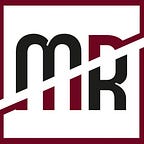Programming Languages: An Overview
Programming languages are the fundamental building blocks of software development. They serve as a means of communicating with computers and giving them instructions to perform various tasks. From web applications and mobile apps to computer games and complex systems, programming languages are the backbone of modern technology.
There are a plethora of programming languages available today, each with its own strengths, weaknesses, and use cases. Here are some of the most popular programming languages and how they are used:
- Python: Python is a high-level, general-purpose programming language that is easy to learn and use. It is widely used for scientific computing, data analysis, artificial intelligence, and web development. Python is known for its simplicity, readability, and large community of users.
2. Java: Java is an object-oriented programming language that is widely used for building enterprise-level applications and mobile apps. Java is known for its portability, security, and scalability. It is widely used for developing large-scale applications in various industries such as finance, healthcare, and retail.
3. JavaScript: JavaScript is a high-level programming language that is used for client-side web development. It is widely used for creating interactive websites, building dynamic user interfaces, and adding special effects to web pages. JavaScript is often used in conjunction with HTML and CSS.
4. C++: C++ is a high-performance programming language that is widely used for developing system software, video games, and high-performance computing applications. C++ is known for its efficiency and ability to handle low-level tasks such as memory management.
5. Ruby: Ruby is a high-level, dynamically-typed programming language that is used for building web applications, server-side scripts, and automation tools. Ruby is known for its simplicity, readability, and expressiveness.
6. HTML: HTML, or Hypertext Markup Language, is a coding language used to create and structure web pages. It provides the backbone for web content, determining its structure, layout, and display. Search engines like Google use HTML to understand the content and structure of a website, so it’s important for website owners to optimize their HTML for search engines.
Here are some tips for optimizing HTML for SEO:
- Use descriptive and concise headings: Use H1, H2, and H3 tags to structure your content and make it easy for search engines to understand. Use descriptive and concise headings that accurately describe the content that follows.
2. Use keyword-rich descriptions: Provide a brief, keyword-rich description of your website using the meta description tag. This will help search engines understand what your website is about and improve your search engine rankings.
3. Optimize images: Use descriptive and keyword-rich file names and alt tags for images. This will help search engines understand the content of your images and improve your visibility in image search results.
4. Use internal links: Linking to other pages on your website can help search engines understand the structure and content of your website, as well as provide a better user experience for visitors.
5. Validate your HTML: Use a validation tool to ensure that your HTML is properly formatted and error-free. Invalid HTML can cause problems with search engines and negatively impact your rankings.
By following these tips, you can improve the SEO-friendliness of your HTML and help your website rank higher in search results.
There are many other programming languages available, each with its own strengths and use cases. The choice of programming language depends on the task at hand and the specific needs of the project.
In conclusion, programming languages are a critical component of software development, and choosing the right one can make all the difference in the success of a project. Whether you’re building a simple website or a complex system, it’s important to understand the strengths and weaknesses of each programming language to choose the right one for your needs.
